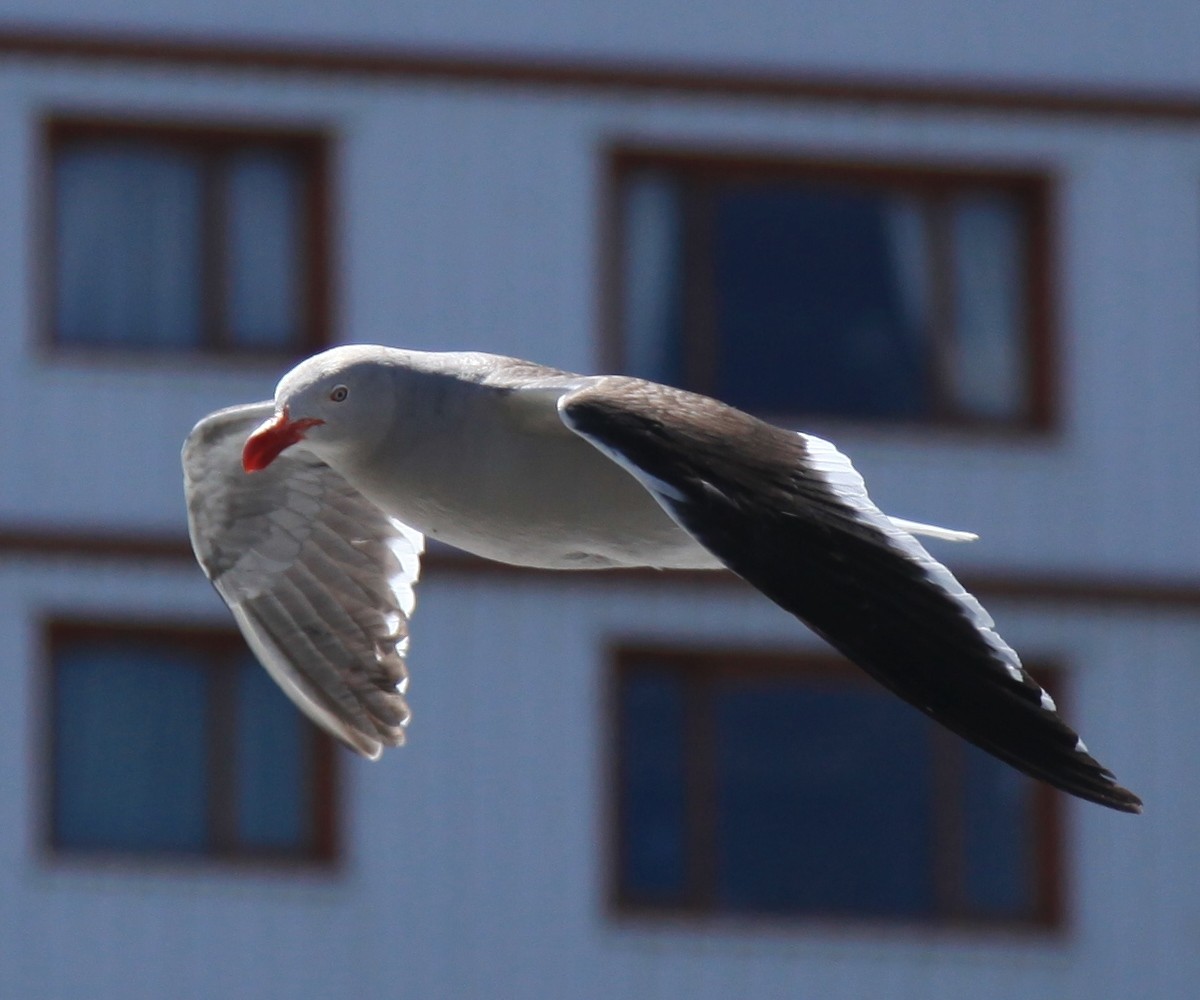Dolphin Gull
A species of Hooded Gulls Scientific name : Leucophaeus scoresbii Genus : Hooded Gulls
Dolphin Gull, A species of Hooded Gulls
Botanical name: Leucophaeus scoresbii
Genus: Hooded Gulls
Content
Description General Info
 Photo By Liam Quinn , used under CC-BY-SA-2.0 /Cropped and compressed from original
Photo By Liam Quinn , used under CC-BY-SA-2.0 /Cropped and compressed from original Description
The dolphin gull (Leucophaeus scoresbii), sometimes erroneously called the red-billed gull (a somewhat similar but unrelated species from New Zealand), is a gull native to southern Chile and Argentina, and the Falkland Islands. It is a coastal bird inhabiting rocky, muddy and sandy shores and is often found around seabird colonies. They have greyish feathers, and the feathers on their wings are a darker shade. Dolphin gulls have a varied diet, eating many things ranging from mussels to carrion. The modern scientific name Leucophaeus scoresbii, together with the obsolete common name Scoresby's gull, commemorates the English explorer William Scoresby (1789–1857). 
Size
46 cm
Nest Placement
Ground
Feeding Habits
Dolphin Gull predominantly scavenges carrion and offal, unguarded bird eggs and chicks, and marine invertebrates. Exhibits opportunistic feeding behavior close to its colony, exploiting human disruptions to eat eggs and chicks. Known for pilfering from penguins and cormorants, dolphin Gull also consumes fish remnants, mussels, crustaceans, and insects. They sometimes forage at dumps and sewage outfalls, displaying a diverse diet.
Habitat
The dolphin Gull primarily inhabits rocky coastal environments, often seen on low sea cliffs, sand or gravel beaches, and marshy areas. They are typically associated with the vicinity of seabird colonies and marine mammals, and can also be found near human-related sources of food such as slaughterhouses, sewers, or farmyards. While non-breeding individuals commonly frequent harbors, the dolphin Gull generally prefers areas close to fresh water sources.
Dite type
Carnivorous
General Info
Feeding Habits
Bird food type
Behavior
The dolphin gull is a scavenger and opportunistic predator. It feeds on carrion, offal, bird eggs, nestlings, marine invertebrates and other natural food. When humans disturb nesting seabirds, it takes advantage of the absence of adult birds to raid their vacated nests. It was found that excluding humans from areas where cormorants were nesting increased the reproductive success of the cormorants. It also takes advantage of the activities of marine mammals to scavenge for dead fish, placentae and faeces, which are a major attraction. Dolphin gulls nest in small colonies of up to 200 pairs and are usually on low cliffs, sand or shingle beaches, headlands or marshy depressions. Two to three eggs are laid in December and the chicks fledge in March. The older chicks gather together in crèches. 
Distribution Area
The dolphin gull is found round the coasts of Chile, Argentina and the Falkland Islands. It is a vagrant to South Georgia and the South Sandwich Islands. It is found on rocky coasts and in the vicinity of other colonies of seabirds, slaughterhouses, sewage outflows and farmyards. 